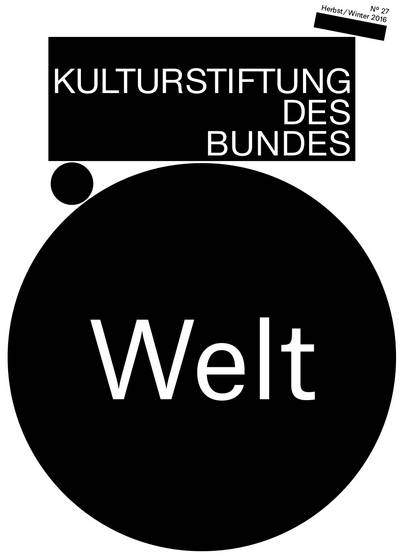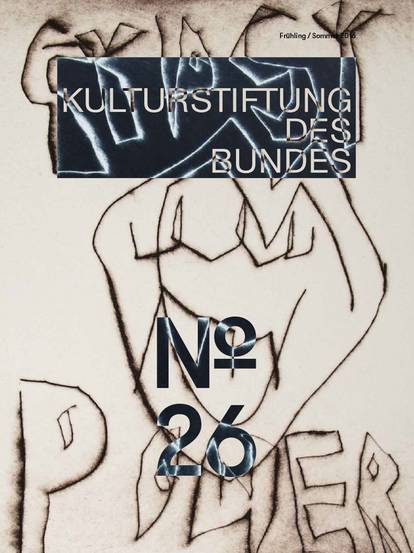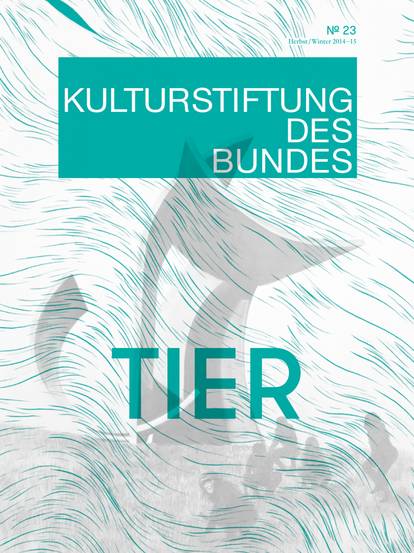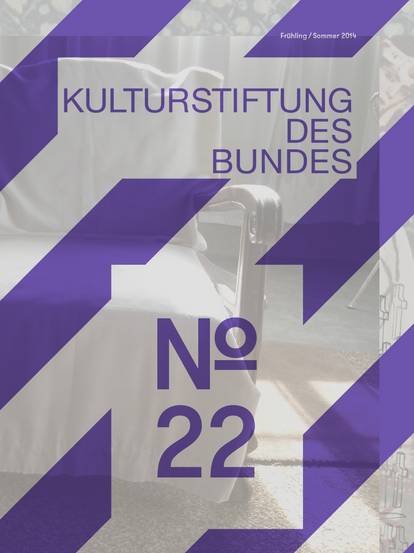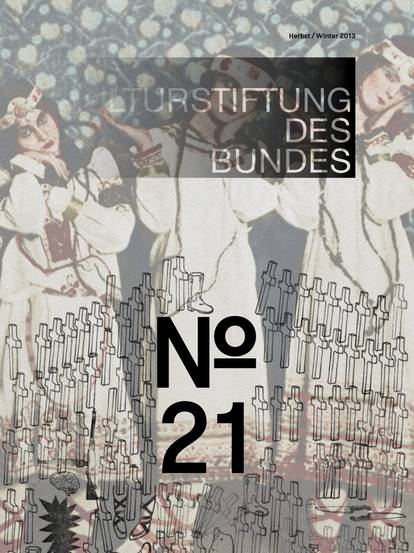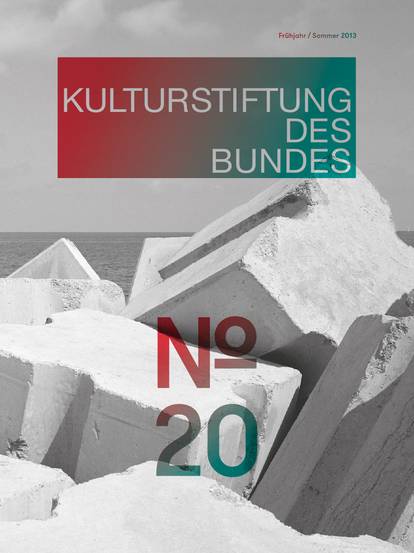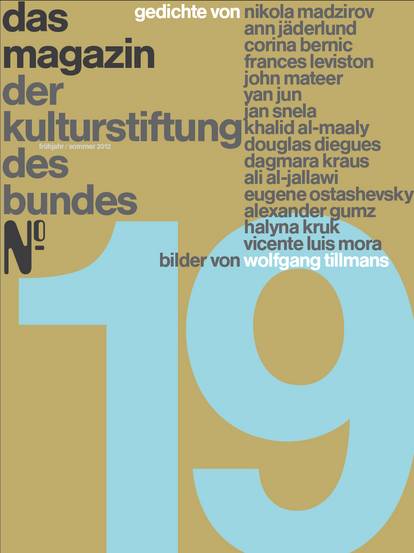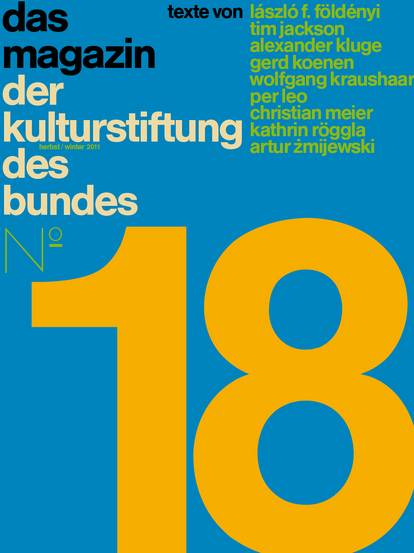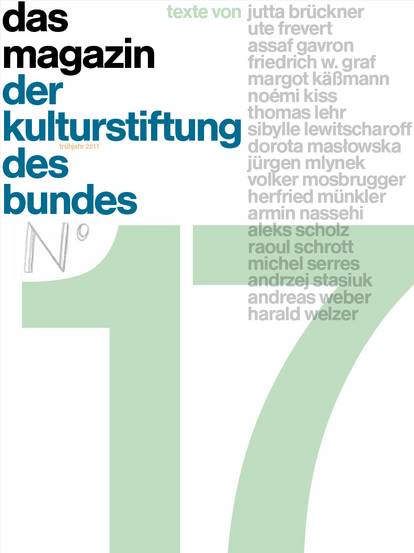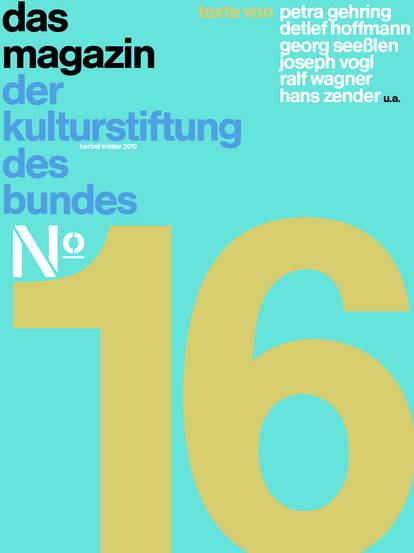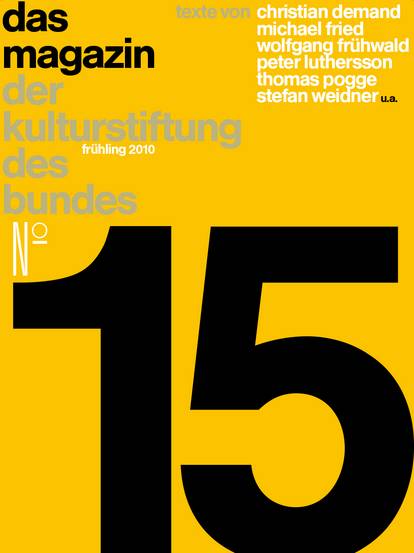“Postwar – Art between the Pacific and Atlantic, 1945–1965” could well be the first exhibition in Germany to move beyond the Eurocentric or Western perspective and portray postwar art as a global network of relationships in an increasingly interwoven and interdependent world.
The following is an abridged version of the exhibition concept by the curators Okwui Enwezor, Katy Siegel and Ulrich Wilmes – an essayistic overview of the global constellations and lines of art development in the postwar era.
The years after World War II that followed the decisive defeat of Germany in Europe and of Japan in Asia marked a turning point in global history. The catastrophe and chaos caused by the war had destroyed entire cities and nations, resulted in the death of millions and produced a massive refugee crisis as millions of stateless people sought a new home. And this against the backdrop of the first use of the atomic bomb and the unspeakable horrors of the concentration camps. The ethical and technological legacies of Hiroshima and Auschwitz became a symbol of the crisis of humanism.
In the field of art, the postwar period marks a particular historical and cultural turning point, too, for it brought about the waning dominance of Western European art capitals and the rise of the international presence and hegemony of contemporary American art, popular culture and mass media. This cultural shift, in fact, mirrored the shift in geopolitical power in which defeated Europe acquired and acquiesced to new patrons and protectors. In Europe, as the Cold War divided the continent into two separate spheres of influence — the Warsaw Pact countries of Eastern and Central Europe allied with the Soviet Union, and the NATO countries of Western Europe allied with the United States — the state of the arts also revealed a distinct ideological fault line: between communism and capitalist democracy, “socialism and liberal democracy”.
Informing this simplifying binary, which obscured more complex motivations for artistic production, were the ideological and artistic rationale behind the terms “abstraction” and “socialist realism.” These terms became moral equivalents in the contest for a renewed vision of art after the war. The same spheres of influence also divided the Pacific region between the United States and the Soviet Union into two unyielding competitors. On a global scale, however, several factors complicated this binary — decolonisation struggles, independence movements and anti-colonial resistance in Africa, Asia and the Middle East — even as the Cold War powers courted and sought control of the new nations. These increasingly independent actors suggested quite different orientations and alliances — including pan-Africanism and the Non-Aligned Movement — in the wake of imperialism and the end of the war. The question being asked everywhere was: What could global modernism look like?
If we had to rearrange the cartographies of postwar modernism once more, which methods could we use? To what extent did the political sphere influence the aesthetic world, or the cultural sphere the artistic world? And conversely, how did artists, critics and intellectuals negotiate, resist and undermine political ideologies? How were artistic practices and aesthetic frames reconstructed in disseminated political and cultural contexts? And how did intellectual movements in the former colonial peripheries shape the modernist terrain? In other words, how did the cycle of art, objects, discourses and ideas form the global contours of postwar modernism? What connections – if at all – existed between form and context in the postwar world?
The postwar era is introduced by the apocalyptic image of the atomic bomb — a technology that ushered in an era of intertwined beginnings and endings, promise and betrayal. As accounts of the Holocaust and images of the concentration camps put an end to European aspirations to moral universalism, the bomb and the devastation of Hiroshima and Nagasaki signalled the end of Europe’s political power in the world and the beginning of an era of American military dominance. This, in turn, prompted a new kind of war: the Cold War and the arms race. While the end of World War II heralded an era of military occupation in Japan, it also sparked fights for freedom and independence in Africa, Asia, the Middle East and elsewhere. Ubiquitous both as an image of itself and in the threat it posed to the entire world, the iconography of the mushroom cloud helped create a new consciousness of the planet as a single, interconnected entity, a new sense of scale emphasised by the space exploration programme that would emerge from military technology, affording views of the Earth that reinforced this sense of global integrity and interconnection.
The American use of the bomb represented and enacted American military and economic dominance. Despite their scepticism toward the American government’s reasoning for employing the bomb, artists were excited by the wondrous natural revelations and awed by the Biblical scale of the bomb’s power, as evident, for example, in Normal Lewis’s work “Every Atom Glows: Electrons in Luminous Vibration” (1951) and “Nuclear Explosion” (1951) by the Italian Movimento Arte Nucleare. The bomb was also a Japanese story, told through photography (much of it suppressed, only to be later released) by artists such as Iri and Toshi Murki who returned to Hiroshima just three days after its destruction and decided to create an ambitious photo series titled “Hiroshima Panels” (1950–1982), portraying the suffering they saw there. In the wake of futurism’s worship of technology, Italian artists were also keenly focused on the bomb. In 1952, Enrico Baj painted the “Bum Manifesto”, a head in the shape of a black mushroom cloud against a poisonous yellow background, overwritten with anti-atomic slogans and mottos, such as: “People’s heads are filled with explosives/every atom explodes”.
Photographs and films of ruined cities and concentration camp survivors were released in the immediate postwar period. The shock of these images, and the full realisation of the scale and depth of the horror of the camps, inspired numerous artworks in Germany, such as Andrzej Wróblewski’s “Rozstrzelanie z gestapowcem (Rozstrzelanie IV)” (1949), Gerhard Richter’s “Atlas” (1962–present) and Wolf Vostell’s cycle “German Views from the Black Room” (1958–63).
Hiroshima and Auschwitz laid bare the failures of Western civilisation. In the wake of these shocks came ambivalent political attempts to establish geopolitical systems that would be more just, through such new legal forms as the United Nations and the Universal Declaration of Human Rights — putatively global but in fact dominated by Western authority — and the struggles for full citizenship and autonomy of people in former European colonies. Philosophers and artists sought to inquire more deeply into human nature itself, in debates that included the discourses of négritude and existentialism, and the rights of individuals and groups within larger (often oppressive) social and political entities.
These artists often deliberately combined figuration and materialist facture, refusing the choice between abstraction and representation — or between physical and social life, seeing the binary as not only ideologically false but also deeply destructive. At a postwar art conference in Darmstadt, West Germany, the political adversaries Hans Sedlmayr and Theodor W. Adorno surprisingly found common ground as they both lamented the lack of a centre of contemporary culture for it seemed that contemporary art wasn’t capable of addressing fundamental human concerns, not to speak of emotions and everyday life. This issue was also discussed by East German immigrants, such as Georg Baselitz who avoided and deformed the politically charged choice between abstraction and socialistic realism, yet represented extremely vivid individual figures. In the MoMA exhibition “New Images of Man” which included images by such artists as Francis Bacon and Alberto Giacometti, introduced and likewise warned against “the danger that resides in modern man – the danger of losing one’s humanity”, a danger that exists in totalitarianism and in a technology-oriented mass society to an equal degree.
The most significant counterforce to universalist Western humanism came, in different veins, from former European colonies. In 1961 Léopold Senghor wrote of the necessity of distinguishing and locating human nature, and that, in contrast to modern (Western) as well as Marxist univeralism, “man is not without a homeland. He is not a person without skin colour or history or state or civilisation. He is a West African man, our neighbour who is precisely defined by his time and his place ... a man who has been humiliated for centuries, and in his dignity as a physical human being not so much because for being hungry or naked, but because of his colour and his culture.” This specific dignity is perhaps best portrayed in the images of the human body performing hard physical labour by artists such as Hamed Owais and Inji Efflatoun.
Sometimes, as with Franz Fanon’s “new man,” the formerly colonised claimed a moral right to define humanism broadly and universally, a right abrogated by the West with its inhumane behaviour during the war and its colonial conquests. We recognise this new form of humanism, for example, in the thinkers portrayed by the Indian artist Francis Newton Souza – coloured bodies who acquire the traditional intellectual and ethical privilege of Westerners.
The other side of the Cold War binary is, of course, the socialist realism in Soviet, Chinese, and Eastern and Central European art. Here, to a greater extent, institutional appropriation came before, not after, artistic production. Nevertheless, accounts of this category, too, can be overly fixed. Even in the heyday of its enforcement, socialist realism was not a single style. Under Mao Zedong, Chinese artists produced large official portraits of the Chairman (Jia Youfu, “Marching Across the Snow-covered Mount Minshan” (1965)) and scenes depicting model workers. But there was also tolerance of traditional ink painting, with the addition of appropriate symbols of the new order, such as the red flag. In the Soviet Union, art from the 1940s to Josef Stalin’s death in 1953 is primarily characterised by affirmative images of work, especially by heroic images of party leaders (Yuri Vasilyevich Yakovlev, Portrait von Georgii Zhukov, marshal of the Soviet Union, 1946). During the post-Stalinist thaw, genre painting influenced by the 19th-century Russian Wanderers became more prominent, as well as the “severe style”, influenced by Soviet art of the 1920s and early 1930s. Outside the Soviet Union there was considerably more latitude for artists working with official socialist representation, and painters such as the Lithuanian native and Cracow-resident Andrzej Wróblewski, who produced works which, while depicting officially sanctioned subjects, introduced personal drawing styles as well as surrealist elements.
While the international abstract style that dominated the postwar world was primarily materialist and gestural, prewar geometric abstraction did persist, albeit with an impetus quite distinct from that of European prewar artists. With Max Bill’s first visit to Argentina and his participation in the first biennial in São Paulo in 1951, a genetic link was formed between neo-concrete art in South America and European concrete art. But this style also contained local impulses such as Joaquín Torres García’s vitalism which combined with elements of European modernism and became an entirely independent phenomenon, incorporating the viewer as a participant and venturing far beyond the forms of painting and sculpture. Parallel to this development, a nationalist style developed which not only refuted the tenets of Western capitalism but figured in competition with it.
Following the massive upheavals resulting from World War II, the terms associated with cosmopolitanism shifted radically. People were on the move. Massive populations — refugees, stateless people, and diasporas — were moving between continents, countries, and cities, forming dispersed lines of displacement, migration, exile, affinities, and settlements. In his essay “Reflections on Exile”, Edward Said touches on the dilemma of exile, observing that “exile is strangely compelling to think about but terrible to experience”. The hostile policies and limited opportunities at home incited African American writers and artists like James Baldwin and Beauford Delaney to seek cosmopolitan refuge and emigrate to Paris.
For Mark Tobey, China and Japan were places of freedom – albeit in a rather different form. When we think of cosmopolitanism, we should also regard it as inherent to processes of change, upheaval, opportunities and imagination, and as a form of cultural overlapping and transnational artistic self-development.
“New hybridities”, as scholars put it, have emerged in modernism and contemporary art when citizens of present and former colonies studied formally and informally in the West, or when refugees fleeing oppression and racism left their homelands to find safe places elsewhere. World War II was possibly responsible for one of the largest and most extensive cultural and artistic migratory movements ever. We can reflect on postwar art in newly hybridised terms as both a process of acclimatisation and withdrawal from a culture, in which artists contributed to an international style of abstraction with indigenous, traditional and local imagery, fused together in a new aesthetic logic and new formal concepts. Categories like local, tradition, nationality, autonomy and universal etc. collide and combine to form new meanings.
Related diaspora situations, various colonial legacies and money channelled to support exchange during the Cold War helped send artists around the world to study and participate at centres of modern art production and marketing. Even magazines like Black Orpheus served as an importance source of virtual travel and interaction during the entire postwar era. This suggests that we should not only reflect on diaspora and exile, but on consciously chosen affinities in thinking. How would our image of cosmopolitanism change if it were not so much oriented on the afterglow of colonial relations, but rather on a dialectic relationship to nationalism?
Nationalism is one of those key terms that have been in constant motion during the postwar period. Benedict Anderson employs the idea of “imagined communities” to describe the fluctuating currents of thought regarding nation and nationalism. In his ground-breaking study on nations and nationalism, he provides decisive insights when he challenges us to think about “the ‘political’ power of such nationalisms versus their philosophical poverty and even incoherence”. Artists in the US and Europe often declined to align themselves with their national governments, which had proven corrupt and militaristic. Nationalism had a different valence for artists in countries that had newly struggled for and won independence, such as Iraq, Cuba, China, India and Pakistan, Israel, Indonesia, Thailand, the Philippines, Nigeria, Senegal, and South Africa. For this reason, those artists sought cultural forms to articulate and represent new national identities.
Nigerian artists, for example, played institutional and governmental roles, through personal commitment to national independence and the role of culture in establishing national identity. Ben Enwonwu and Uzo Egonu levelled criticism at Europe’s acquisition of their national imagery by displaying African masks and instruments. In Egypt Gazbia Sirry portrayed the martyrdom of the Egyptian people under British occupation, whereby he established a connection between the Egyptian conditions and the suppression of the African Americans (whose civil rights movement permeated the works of Jack Whitten and others and often assumed a nationalist coloration).
There was a struggle to define what was truly national in identity, for example, in the debate between those who advocated discarding cultural tradition in the effort to become both independent and modern, and those who saw indigenous identity as central to their new national identity. In Southeast Asia, the choice would be described as one of East versus West, with ‘the West’ representing Europe, the future, education, and technological progress; and ‘the East’ representing indigenous knowledge, non-Western identity, the past, and tradition.
At its conclusion, “Postwar“ shifts the understanding of art engaged with mass culture away from the usual focus on consumer goods and the signs, symbols, and logos that advertised them, and instead toward the circulation, distribution, and communication of those signs via technology and broadcast networks. Communication, for example, also underlay the systems theories of cybernetics that appealed to an international array of artists rooted in a variety of aesthetic and political orientations. It had particular appeal for artists seeking affinities across national boundaries: the 1961 Belgrade “New Tendencies” exhibition featured works by 29 artists from Argentina, Austria, Brazil, France, Germany, Italy, Switzerland and Yugoslavia. This new optical and kinetic art, as demonstrated by Mohammed Melehi for example, sought to transmit information on a fundamental, physiological wavelength transcending the cultural specifics of language. Similarly, communication drew artists to new technologies. The British artists in the Independent Group, particularly John McHale, were oriented toward popular culture’s technological, even futuristic aspects, from transistors to robots. Fluxus and other artists such as Karl Otto Götz and Nam June Paik experimented with the new medium of broadcast television, aspiring to make art that not only took part in the latest electronic technologies, but could also communicate to an audience beyond the art galleries themselves. All these artists sought an art adequate to a world conceived as a single integrated system or organism.

![[Translate to English:] Magazine 38](/fileadmin/_processed_/f/1/csm_Magazin38_Cover-Vorschau_921x1230_689f428dc3.jpg)
![[Translate to English:] Magazine 37](/fileadmin/_processed_/b/c/csm_Mag37_Cover-Vorschau_921x1230_b5129fdb2a.jpg)
![[Translate to English:] Magazine 36](/fileadmin/_processed_/2/a/csm_Cover_Magazin36__issuu_2f3cef97bb.jpg)

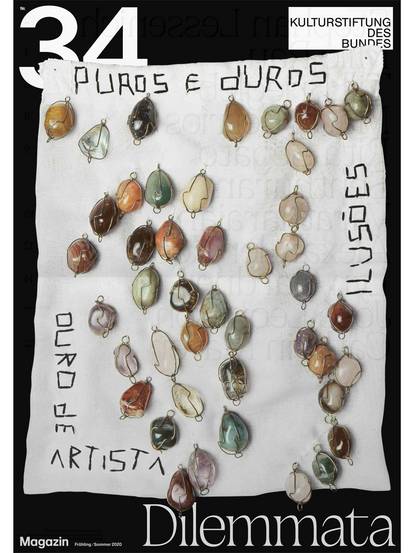
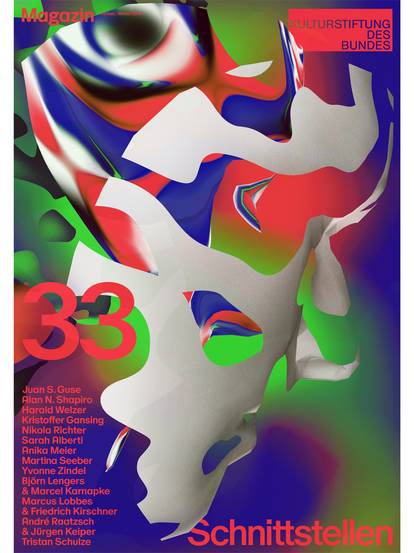
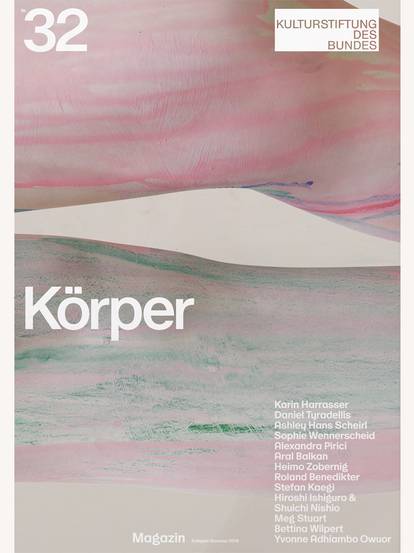
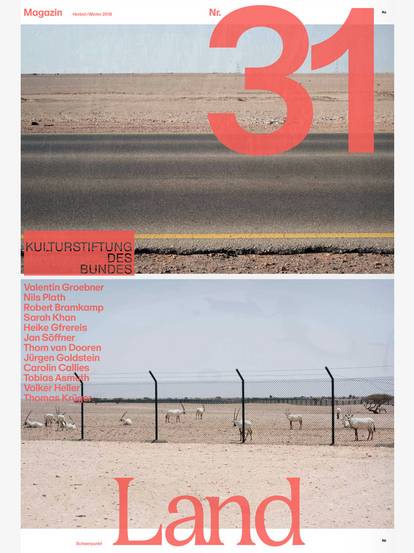
![[Translate to English:] Magazine 30](/fileadmin/_processed_/c/b/csm_magazin30_vorschau_9005f773d3.jpg)


